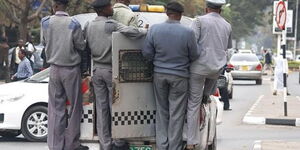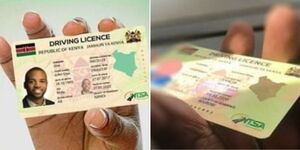The Independent Electoral and Boundaries Commission (IEBC) released a seven-step guide to be followed by Kenyans as they cast their votes on August 9.
Polling stations across the country opened at 6am and will close at 5pm. However, those who will not have cast their votes but will be at the polling station by the time of closing will be allowed to vote for an extended time.
Here is the breakdown of the seven-step guide to be followed by voters.
1. The opening of polling stations at 6am
All polling stations will be opened at 6am, voters are required to enter the polling station with their Identification Cards or Kenyan Passport. ID card is a mandatory requirement for any voter who wishes to cast their ballot in the August election.
2. The voter is identified and authenticated using the KIEMS kit
The second step is voter identification and authenticated using the KIEMS kit. The kit will identify the voter electronically through its automated poll book known as the Electronic Voter Identification (EVID) system. Voter identification ensures that the voter’s name is indeed in the voters' register so that the voter can be eligible to vote.
3. The Voter is issued with 6 stamped ballot papers
After a successful voter identification and authentication using the KIEMS kit, the voter is handed 6 stamped ballot papers by an IEBC official. The ballot papers will be those of presidential, gubernatorial, senatorial, Members of Parliament, Woman Representatives, and Members of the County Assembly candidates.
4. The voter will then move to the booth and marks the ballot papers secretly
After the voter has marked the ballot papers, he/she will then move to cast the ballot according to the labelled ballot boxes. The voter is required to mark the ballot paper by using either a tick (✓) or a cross (✗) against the name and symbol of a voter’s candidate.
The symbol is either of the party or an independent candidate. Most importantly, a voter is required to use one symbol and it should be marked inside the box.
5. The voter casts the ballot papers in the labeled ballot boxes
After marking the ballot paper for each position, the voter is required to fold each of them to conceal their vote. The voter is then required to proceed to cast each of the six ballot papers provided for each position according to the colour of the papers.
This process is done as the Presiding Officer and the party agents are watching. The voter must ensure that they place each vote in the correct ballot boxes to avoid spoiling the vote.
6. The voter's finger is marked with indelible ink
After voting, the voter proceeds near the exit where their is a clerk. The voter is then marked with an indelible ink that is placed on the small finger on the left hand or the space between the index finger and the middle finger in case of nail polish.
The ink cannot be removed easily because it is meant to last for some hours to prevent someone from voting twice and is used to identify people who have voted.
7. The voter leaves the polling station
After voting, the voter is expected to leave the polling station. The voter can decide to go home, to work or do any other activity.
A voter is not expected to remain at the polling station. The voter will have to wait for the final tally and the final results to be announced by the Returning Officer.












